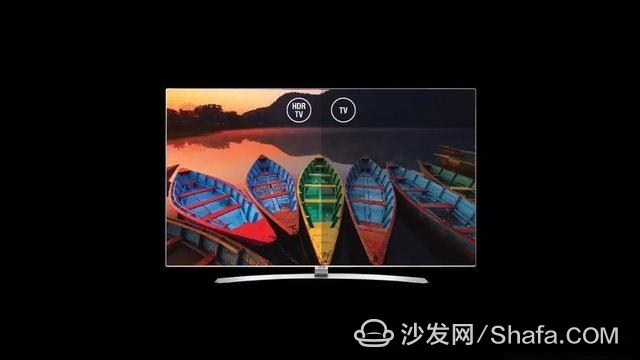
So what exactly is HDR referring to? Is the flood of marketing information doped with water? The conditions for truly enjoying HDR content need to be met. We will use the first two articles to clarify what you need to know about HDR.
1. What is HDR and what are the criteria for HDR allocation?
2. Conditions to watch for true HDR content
This article is the first in the HDR series: What is HDR and what are the criteria for HDR allocation?
HDR is the abbreviation of the English phrase High Dynamic Range, literally translated as "high dynamic range", where the dynamic range mainly refers to the image brightness, contrast (the ratio between the minimum and maximum brightness values).
Natural objects are displayed on the screen and undergo a series of processes such as shooting-compression-coding-transmission-decoding-display. If the final image can restore the scene observed by the human eye completely on the screen, then we do not need to " The word "high dynamic range", you can think of the dynamic range as 100%.
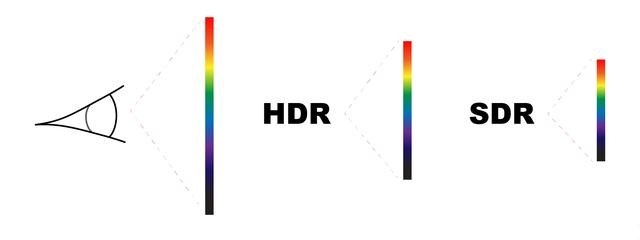
Human eye, HDR, SDR color range comparison
In fact, the range of brightness that the human eye can feel is about 10-3 nit to 106 nit (nits, brightness units), and the instantaneous contrast range that can be felt is up to 10,000:1. The screen in front of your eyes is average. The brightness may be about 300nit to 400nit, and the contrast may be 2000:1. It can be seen that the screen restores the scene observed by the human eye, and there is still a long way to go.
HDR color depthBefore explaining the quality improvement brought by HDR, we have to first explain the Standard Dynamic Range (SDR), the standard dynamic range, which is currently the mainstream standard for the production of video content. Whether it is a film and television company to create content, or screen manufacturers to determine product parameters, no need to follow this standard.
We know that each color can be made of a mixture of red, green, and blue primary colors. Under the SDR standard, the brightness of the three primary colors is divided into 256 levels (0-255, which is commonly known as RGB values), so that the SDR standard The total number of colors that can be displayed next is 16.67 million (256*256*256).
256 is the 8th power of 2, so artificially introduces an 8-bit concept called color depth, which indicates the number of color types that can be restored under the SDR standard.
256 levels are artificially divided. In fact, one color is far more than 256 colors from the brightest to the darkest. It can even be divided indefinitely.
The depth of color applicable under the HDR standard is 10Bit, that is, the three primary colors of red, green, and blue are all divided into 1024-level brightness (2 of the 10th power), so that the number of color types that can be displayed is 1024 to the third power, about 1.07 billion. Comparing SDR standards is an exponential improvement.
The following figure shows the color contrasts that can be displayed under the 8bit and 10bit standards. It can be clearly seen that under the 10-bit standard, the color is more layered.
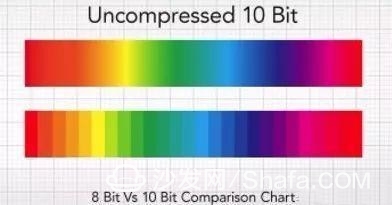
8 bit and 10 bit can display the color contrast
Therefore, HDR's so-called high dynamic range, one of which refers to the brightness range of color reproduction, HDR 10bit color depth standard image, has a more delicate light and dark color transition, closer to the actual situation seen by human eyes.
The so-called HRD camera mode in the camera is actually taking three photos, one overexposure, one standard exposure, one underexposure, and finally synthesizing three photos into one by a software algorithm. Intercept more details of highlights and shadows.
This is why using the early HDR camera mode requires a certain amount of processing time because of insufficient processor performance. The latest release of the iPhone 8 series, thanks to the powerful computing power of the A11 bionic processor, has set the HDR function to By default, the imaging delay caused by photosynthesis is almost not noticed.

Comparison of SDR and HDR images
HDR color gamutAnother concept corresponding to color depth is the color gamut. The former represents the number of colors that can be displayed, and the latter represents the range of colors that can be displayed.
Currently, the display color gamut covered by commercial LCD/OLED screens is probably BT.709, which is approximately equal to 95% NTSC color gamut promoted by mobile phone manufacturers (72% NTSC = 100% sRGB). In the past two years, many mobile phones and notebook computers have started. The DCI-P3 color gamut is supported. The color gamut standard for HDR is BT.2020.
The range of color reduction for BT.709 and BT.2020 is shown below. That is, the BT.2020 color gamut of the HDR standard far exceeds the existing color gamut and can display a richer color range.
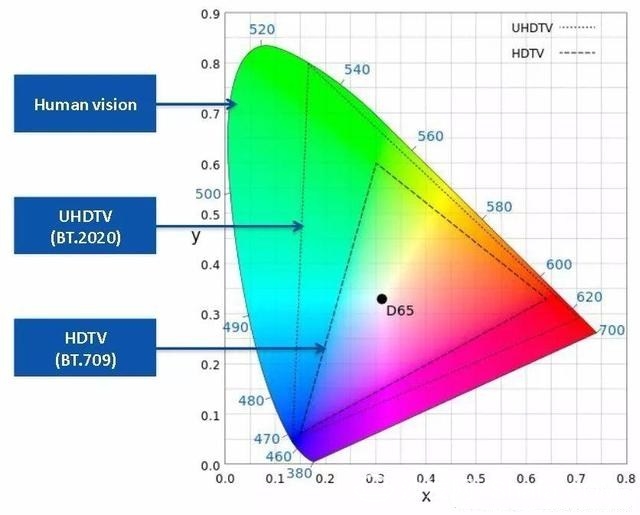
Human eye, BT.2020, BT.709 color gamut comparison
HDR is a leap in the number of color displays and the display range. Under the HDR standard, the image has better details of light details and dark details, full color, and strong texture, which can more vividly show what the human eye observes. color.

HDR can display a brightness range from 145nit to 14700nit in one image
If the increase in screen resolution in the early days of smartphone development was an increase in the number of display pixels, then HDR is an overall improvement in pixel quality. The increase in resolution needs to be felt with the right screen size and viewing distance. Regardless of the size of the screen and the distance from the viewing distance, the HDR is clear about the improvement of the picture quality. You can even understand it is from black and white television. The revolutionary experience of color television.
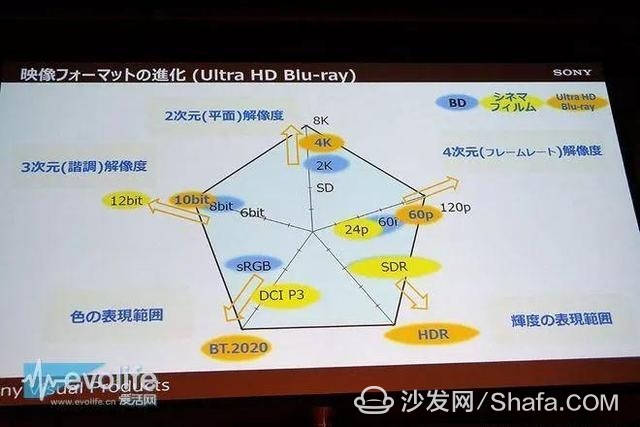
Sony announced Ultra HD quality standard, including 5 dimensions
Different HDR standardsThe proliferation of any new technology is accompanied by a standard battle. It is like the current mobile phone industry is in full swing. If there is no single association or organization that defines a full screen, then anyone can claim to be a full screen. Of course, a full screen is not a concept involving the upstream and downstream industry chains, so it is not necessary to establish related standards.
Speaking of HDR, in order to define whether the image restoration capability truly meets the corresponding HDR standard, different organizations have developed different HDR standards. You may have seen that some TVs or monitors claim to support HDR10. Here, HDR10 is one of the HDRs. standard.
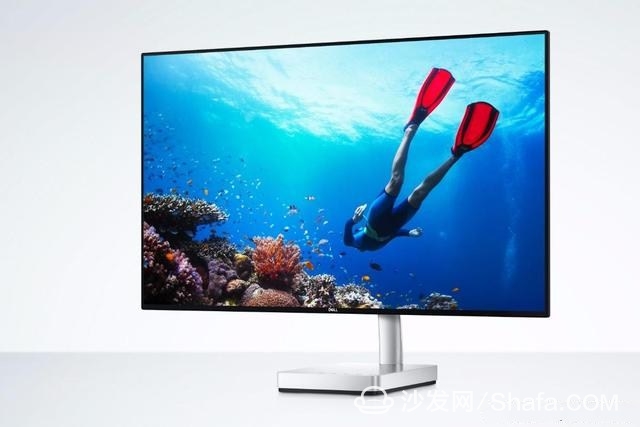
Supporting the HDR10 Dell S2718d monitor, I personally picked it up
The HDR10 standard defines a series of conditions for image restoration capabilities, including the 10 Bit color depth and BT.2020 color space we mentioned earlier, and other specifications. Only by satisfying these conditions can we claim to be HDR10.
HDR10 is an open source standard and is currently the most common HDR standard you can see. HDR10 was announced by the Consumer Technology Association on August 27th, 2015 and has so far received Dell, LG, Samsung, Sharp, Sony and Vizio. Support from monitoring and television manufacturers has confirmed that Sony's PS4 and X Box One S game consoles already support the HDR10 standard.
On the basis of HDR10, on April 20th, 2017, Samsung and Amazon jointly conducted a set of HDR10+ standards. The main improvement is the brightness adjustment in the scene of frame-by-frame switching. HDR10+ is rarely mentioned at present and it is said that Amazon Video will provide HDR10+ standard video content.
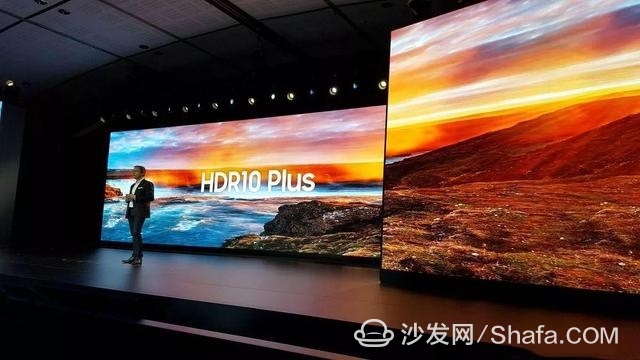
HDR10+ Standard Announced
Another important standard that must be mentioned is Dolby Vision, an ultra-high definition Blu-ray TV standard developed by Dolby Laboratories. Unlike the open source HDR10, only Dolby Laboratories certified equipment. Claiming to support the Dolby Vision standard, and this certification process is required to pay Dolby, these costs are also indirectly calculated to the equipment cost, the equipment supporting the Dolby Vison standard is generally expensive.
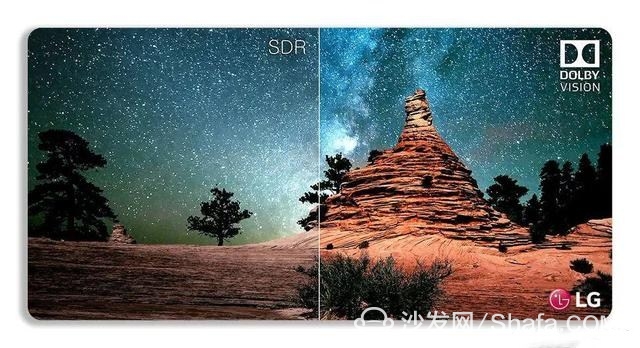
LG Dolby Vision Picture Quality and Common SDR Picture Quality
The color depth of the Dolby Vision standard has been further increased to 12Bit, and the display needs to meet at least 4000 nits of brightness. Sony, LG, and others have already supported Dolby Vision's Ultra HD display.
In addition, there is also a Mobile HDR Premium standard for mobile devices. Its technical specifications are similar to those of HDR10, but it is slightly lower, covering approximately 90% of the P3 color gamut and 500 nits of brightness, compared with the HDR10 standard. Brightness is at least 1000 nits or more.
to sum upAs a display technology, HDR is used to represent the dramatic increase in color reproduction over the luminance range and brightness level. Wireless approximation of the true picture quality seen by human eyes is a tireless pursuit of the content and display technology industry, resolution and HDR. Respectively represents the efforts made in the two dimensions of pixel count and quality.
HDR is being popularized from the TV industry to mobile devices. Sony Xperia XZ Premium is equipped with the world's first mobile phone 4K HDR screen, LG G6 and V30 are also equipped with HDR screen, HDR is expected to become mobile phone curved screen, full screen, after the mobile display Another technical evolution in technology.In fact, some manufacturers have already begun to use HDR to promote borderline propaganda and understand the principles and causes of HDR. In the next article, we will focus on authentic and false HDR.
Smart TV/box information can focus on smart TV information network sofa butler (http://), China's influential TV box and smart TV website, providing information, communication, TV boxes, smart TVs, smart TV software, etc. Answering questions.Smart Watch,Smart Watch Women,Sport Smart Watch,Heart Rate Smart Watch
GANSU PINGLINAG ABAY SCIENCE&TECHNOLOGY CO.,LTD , https://www.yzwtech.com
